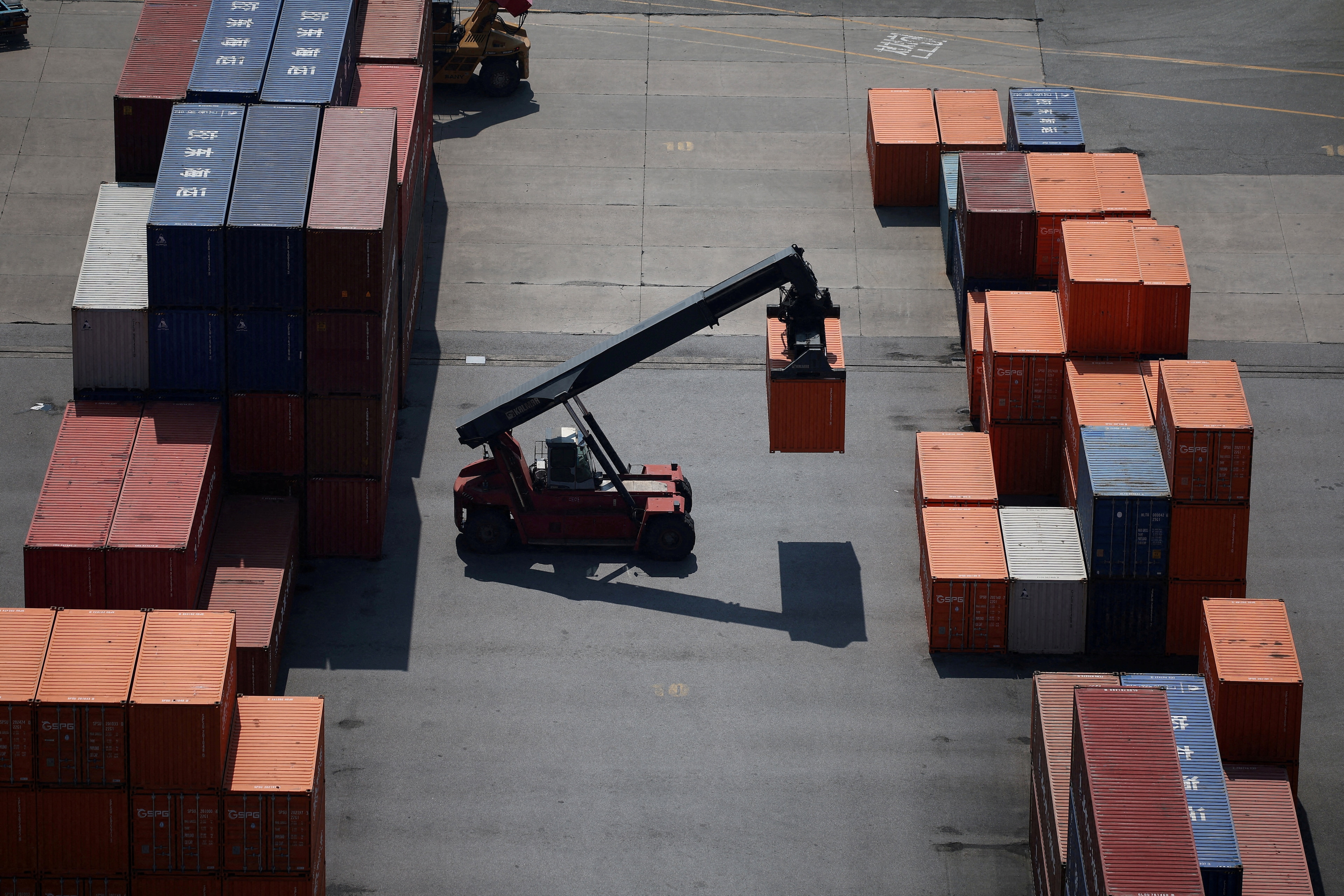How firms that start exporting improve productivity

Stay up to date:
Trade and Investment
A number of studies have pointed out that firms that start exporting exhibit better performance (prior to commencing exports) than non-exporter firms (Bernard and Jensen 1999). Such a causal effect running from the level of firms’ pre-exporting performance to export status, however, is not the whole picture of the relationship.
Exporter firms may be able to achieve better performance after starting exports by, for example, incorporating destination countries’ local demand into their products, utilising better resources endowed in destination countries, and/or self-training firms’ internal operations.
This additional causal linkage running from firms’ export status to post-export performance is called ‘learning by exporting’. A vast amount of literature has been testing the empirical implication of the learning-by-exporting story. A prominent paper by De Loecker (2007) reports the existence of such an effect. Following this study, a handful of literature including Manjon et al. (2013) and De Loecker (2013) report refined results based on more precisely modelled export dynamics and productivity measures. Using Japanese firm-level data, Kimura and Kiyota (2006) also report that exporter firms experienced higher productivity growth.1
Although the theoretical illustration of learning by exporting is relatively straightforward, empirical evidence in the extant literature still has been mixed. While the aforementioned studies largely support the existence of the learning-by-exporting mechanism, Keller (2004) and Wagner (2007) provide counter-evidence against such a mechanism. One resolution for these conflicted results is provided by several recent studies, including Yashiro and Hirano (2009), Damijan et al. (2010), Ito and Lechevalier (2010), and Ito (2011). These papers mainly aim at identifying the conditions under which learning by exporting can be clearly observed and find that pre-exporting research and development (R&D) intensity, firm size, and characteristics of export destinations matter for the effectiveness of the learning-by-exporting mechanism. Thus, an important empirical and policy question on this topic is what enables firms to exploit the benefits of exporting in terms of firm performance.
New evidence
Against this background, we shed light on new firm-level characteristics – that is, the overseas activities of exporter firms’ affiliated companies (Hosono et al 2015). More precisely, we investigate the causal effect running from starting exports to firms’ various performance by using Japanese firm-level data, specifically taking into account as an important firm-level characteristic whether exporter firms’ affiliated firms (e.g. own subsidiaries and parent companies’ branches) already locate abroad.
We can expect that the performance gains from exporting can be observed more clearly in the case where affiliated firms are not present abroad – especially in the market to which the firm starts exports – than in the case where they are, for a number of reasons. First, in the latter case, the firm may have already gained knowledge about the local customers and regulations, among others, through the overseas affiliated firms. Second, firms may export to parent firms’ overseas subsidiaries and hence have little chance to learn the local markets on their own. Finally, contrary to these two reasons, if the affiliated firms give the exporting firm detailed information on the local markets, their presence may accelerate the firm’s learning by exporting. In the case where the exporter firm has no affiliated firms abroad, contrary to the preceding points, we may be able to pick up a pure learning effect from the first access to foreign markets. The purpose of our study is to empirically analyse this conjecture by using a unique firm-level panel dataset that allows us to identify firms that start exports, and firms that stay in domestic markets as well as their affiliated companies’ overseas activities.
We rely on two firm-level data sources. First, information on firms’ export status and their financial characteristics are obtained from the Basic Survey of Japanese Business Structure and Activities (BSJBSA) compiled by the Ministry of Economy, Trade and Industry (METI). The main purpose of this survey is to gauge quantitatively the activities of Japanese enterprises, including capital investment, exports, foreign direct investment, and investment in R&D. To this end, the survey covers the universe of enterprises in Japan with more than 50 employees and with paid-up capital of over 30 million yen. To investigate the differential learning-by-exporting effects between the firms whose parent firms have overseas branches and those that do not, we rely on the BSJBSA. Second, to differentiate the firms that have subsidiaries in export markets (and other foreign markets) from those that do not, we use the information on firms’ own overseas subsidiaries provided by the Survey of Overseas Business Activities (SOBA), another governmental survey research compiled by METI. Using the SOBA, we can identify whether firms own subsidiaries abroad as well as in which areas they are located.
We employ propensity-score matching differences-in-differences (DID) estimation so that we can specifically examine the causal impact of starting exports on firm performance, after properly controlling for pre-export firm heterogeneity. The dataset we use allows us to identify whether or not subsidiaries of exporter firms locate abroad, as well as whether or not the parent companies and/or subsidiaries of exporter firms have their own branches abroad. We can also measure the total amounts of exports to affiliated firms. By using such detailed information about the overseas activities of affiliated firms and trade relationships between exporter firms and their affiliated firms, we can study how affiliated firms’ presence in foreign markets influences their post-export performance.
Our findings can be summarised as follows. First, as reported in a number of extant studies, firms starting exports showed better performance than their non-exporter counterparts prior to export. Specifically, they showed higher productivity as measured by total factor productivity (TFP), larger size as measured by the number of employees, higher wages potentially representing higher skills, and higher liquidity measured by the ratio of liquid assets to total assets. These results are consistent with the widely reported features of exporter firms in the literature.
Second, the differences in TFP and labour productivity between exporter firms and firms that stay domestic show significant widening after exports commence. In the case of TFP, the difference widened by 1.3% upon starting exports and continued to increase to 3.1% over the next six years. In the case of labour productivity, the difference widened by 3.2% and then increased to around 8.3%.
Third, and most importantly, such an improvement in firm performance was both statistically and economically significant for exporter firms without parent firms’ overseas branches or their own overseas subsidiaries (case 1). On the other hand, the performance gain from exports was not statistically significant for exporter firms with both parent firms’ overseas branches and their own overseas subsidiaries (case 2).
In order to see the difference in the results between these two cases, Figure 1 depicts the series of the point estimates of the DID effect on TFP over the 7-year window as well as its 95% confidence band in those two cases. The dashed lines account for the point estimate of the DID effect for case 1 and its confidence band while the bold and thin solid lines account for the results associated with case 2. The figure shows that the DID effect for exporter firms without parent firms’ overseas branches or their own overseas subsidiaries (i.e., dashed lines) stably increases with a relatively small confidence band over the 7-year windows, while that for exporter firms with parent firms’ overseas branches and their own overseas subsidiaries (i.e., solid line) showed a large confidence band. This result implies that exporter firms in case 2 are more heterogeneous in terms of the DID effect on TFP than those in case 1.
Figure 1. DID Effect on TFP (Exporter firms with both their own subsidiaries and parent overseas branches vs. exporter firms with neither of them)
Similarly, for exporter firms with parent firms’ overseas branches but without their own overseas subsidiaries, most of the DID effects are not statistically significant. This result implies that even if exporter firms’ own overseas subsidiaries are absent in export markets, the learning-by-exporting effect is not clearly observed as far as parental companies are present abroad.
Somewhat different from these results, for exporter firms without parent firms’ overseas branches but with their own overseas subsidiaries, TFP exhibited a significant increasing trend following a similar pattern to that of the whole exporter sample. Dividing this into those who actually exported some amount to their own overseas subsidiaries and those who did not, however, we can confirm that the result is driven by the type of firms that did not export to their own subsidiaries.
Overall, these results suggest that the improvement in productivity due to exporting is observed more clearly when firms start exports without overseas affiliated firms or with their own overseas subsidiaries, but not in the export destination. On the other hand, the productivity gain from exporting is highly heterogeneous in the case that affiliated firms are present in overseas markets. This implies that the latter case includes a wide variety of experiences of firms that start exports. On one hand, even exporter firms with overseas affiliated firms might be able to learn effectively from exporting by modifying their product to fit with the local demand – for those cases where export activities are largely oriented by the exporter firms themselves. On the other hand, however, there would be few chances for exporter firms to learn from their exports, for example, when all of the export activities are direct orders from parent firms. We leave understanding the sources of such a large variation in TFP improvement to future studies.
Concluding remarks
Our analysis also emphasises the importance of identifying the exact timing for firms to be newly exposed to export markets. In fact, firms with parent firms that have overseas subsidiaries might have learned through communication with their parent firms before starting exports. They would thus have already achieved the potential performance improvement, though not necessarily at the point when they start exporting. Our analysis shows that the effect of learning by exporting is more clearly observed once we focus on the timing of firms being newly exposed to export markets.
The research presented here could be expanded in a number of directions. One would be to take further account of the types of overseas subsidiaries that exporter firms own (e.g. retail, wholesale, manufacturing, etc.) and the types of products, to narrow down the cases where learning-by-exporting effects can be achieved. Second, another interesting analysis would be to focus on specific aggregate shocks such as a financial crisis. While the present study shows that accessing export markets for the first time could result in the improvement of productivity, it is still an open question how this channel was or was not disturbed by, for example, a sudden decline in local demand or severe shortage of financial resources.
References
Bernard, A B and B Jensen (1999) “Exceptional exporter performance: Cause, effect, or both?”,Journal of International Economics, 47: 1-25.
Damijan, J P, C Kostevc and S Polanec (2010) “From innovation to exporting or vice versa?”, World Economy, 33: 374-398.
De Loecker, J (2007) “Do exports generate higher productivity? Evidence from Slovenia”, Journal of International Economics, 73: 69-98.
De Loecker, J (2013) “Detecting learning by exporting”, American Economic Journal: Microeconomics, 5: 1-21.
Hayakawa, K, T Machikita and F Kimura (2012) “Globalization and productivity: A survey of firm‐level analysis”, Journal of Economic Surveys, 26: 332-350.
Hosono, K, D Miyakawa and M Takizawa (2015) “Learning by export: Does the presence of foreign affiliate companies matter?” RIETI Discussion Paper, 15-E-053.
Ito, K (2011) “Sources of learning-by-exporting effects: Does exporting promote innovation?” RIETI Discussion Paper, 11-J-066. (Japanese).
Ito, K and S Lechevalier (2010) “Why some firms persistently out-perform others: Investigating the interactions between innovation and exporting strategies”, Industrial and Corporate Change, 19: 1997-2039.
Keller, W (2004) “International technology diffusion”, Journal of Economic Literature, 42: 752-782.
Kimura, F and K Kiyota (2006) “Exports, FDI, and productivity: Dynamic evidence from Japanese firms”, Review of World Economics, 142: 695-719.
Kiyota, K and S Urata (2008) “The role of multinational firms in international trade: The case of Japan”, Japan and the World Economy, 20: 338-352.
Manjon, M, L A Manez, M A Rochina-Barrachina and J Sanchis-Llopis (2013) “Reconsidering learning by exporting”, Review of World Economy, 149: 5-22.
Wagner, J (2007) “Exports and productivity: A survey of the evidence from firm level data”, The World Economy, 30: 60-82.
Yashiro, N and D Hirano (2009) “Do all exporters benefit from export boom? Evidence from Japan”, KIER Working Paper, No. 689, Kyoto University, Institute of Economic Research.
Footnote
1 In another study in a similar vein, Kiyota and Urata (2008) report exporter firms are more likely to implement foreign direct investment. See also Hayakawa et al. (2012) for an intensive survey covering the studies on exports and productivity.
This article is published in collaboration with VoxEU. Publication does not imply endorsement of views by the World Economic Forum.
To keep up with Agenda subscribe to our weekly newsletter.
Author: Kaoru Hosono is Professor of Economics at Gakushuin University. Daisuke Miyakawa is Associate Professor of Economics at the Graduate School of International Corporate Strategy (ICS) at Hitotsubashi University. Miho Takizawa is Associate Professor at the Faculty of Economics at Toyo University.
Don't miss any update on this topic
Create a free account and access your personalized content collection with our latest publications and analyses.
License and Republishing
World Economic Forum articles may be republished in accordance with the Creative Commons Attribution-NonCommercial-NoDerivatives 4.0 International Public License, and in accordance with our Terms of Use.
The views expressed in this article are those of the author alone and not the World Economic Forum.
Forum Stories newsletter
Bringing you weekly curated insights and analysis on the global issues that matter.
More on Trade and InvestmentSee all
Madeleine North
August 6, 2025
JJ Enoch
August 6, 2025
Spencer Feingold
July 30, 2025
Charlotte Edmond
July 30, 2025
John Letzing
July 24, 2025







